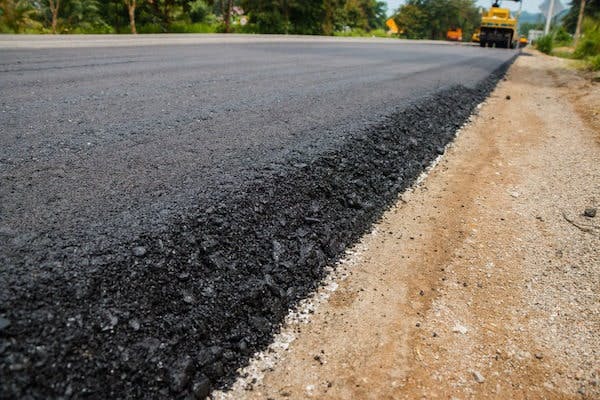Experience the Distinction: Hot Mix Asphalt Paving for Regrading Projects
Experience the Distinction: Hot Mix Asphalt Paving for Regrading Projects
Blog Article
Unlocking the Secrets of Warm Mix Asphalt Modern Technology
Discovering the depths of warm mix asphalt technology reveals a world where accurate solutions and meticulous processes merge to form our roads and framework. The blend of aggregates, fillers, and binders isn't merely a building task however a calculated orchestration of toughness and efficiency.
Value of Warm Mix Asphalt
Hot Mix Asphalt plays a crucial function in modern-day infrastructure development due to its longevity and cost-effectiveness. As the most frequently made use of leading material for roadways, freeways, and car parking whole lots, Warm Mix Asphalt uses a variety of advantages that contribute to its value in construction projects.
The toughness of Hot Mix Asphalt originates from its structure, which consists of accumulations, binder, and filler products that are thoroughly chosen and blended to satisfy specific efficiency needs. This accurate mix leads to a versatile and solid pavement that can withstand frequent usage without significant wear and tear. Hot Mix Asphalt is 100% recyclable, more enhancing its sustainability and ecological benefits. On the whole, the value of Warm Mix Asphalt in infrastructure development can not be underrated, as it continues to be a foundation of modern building practices.
Elements of Asphalt Mixes
The structure of asphalt mixes contains meticulously picked aggregates, binder, and filler materials that are critical for achieving particular efficiency demands. Aggregates are the primary component of asphalt blends, providing strength and security. These aggregates can be all-natural, such as gravel or smashed rock, or synthetic, like recycled materials from old pavements. The binder, typically bitumen or asphalt cement, holds the aggregates together and supplies versatility and longevity to the mix. The choice of the binder is important as it directly influences the mix's performance in various weather. Fillers, such as moisturized lime or Rose city cement, are used to enhance the mix's workability and aging resistance. Angled Parking.
The combination and proportion of these parts play a considerable duty in figuring out the high quality and efficiency of the asphalt mix. Designers carefully create the mix to meet certain requirements, taking into consideration aspects like website traffic quantity, environment conditions, and pavement life-span. Proper choice and balancing of aggregates, binder, and fillers are vital for producing resilient, durable asphalt sidewalks.
Combining and Manufacturing Techniques

As soon as the aggregates are chosen, the binder, typically asphalt cement, is contributed to bind the products together. The binder's quality and amount significantly influence the mix's toughness, resistance, and adaptability to environmental elements. Additionally, fillers like moisturized lime or Rose city cement may be incorporated to boost details features of the asphalt mix, such as its workability or wetness resistance.
Throughout production, the aggregates and binder are heated, usually in between 250-325 ° F(121-163 ° C ), to help with mixing and make sure proper finishing of the accumulations. The mixing procedure has to be comprehensive to accomplish an uniform mixture that promotes the wanted efficiency qualities of the asphalt. Various strategies, such as set blending or drum blending, are employed to attain consistent and important link high-grade asphalt blends for building and construction tasks.
Elements Influencing Asphalt Efficiency
Factors influencing asphalt efficiency encompass a range of variables that impact the toughness, long life, and general top quality of asphalt sidewalks. One vital aspect is the top quality of products used in the asphalt mix.

Layout considerations, such as pavement density and drain, are essential in making sure the long-lasting efficiency of the asphalt sidewalk. By meticulously considering these designers, factors and professionals can optimize asphalt efficiency and boost the solution life of pavements.
Sustainable Practices in Asphalt Modern Technology

WMA allows for the production and placement of asphalt mixes at reduced temperatures compared to standard hot-mix asphalt, resulting in reduced power consumption and greenhouse imp source gas discharges. The usage of porous asphalt blends can help alleviate stormwater drainage problems by allowing water to infiltrate via the pavement and into the ground, advertising natural water filtration and recharge procedures.
Verdict
In conclusion, hot mix asphalt technology plays a crucial role in modern infrastructure development as a result of its resilience and cost-effectiveness. By thoroughly stabilizing parts, using correct blending techniques, and taking into consideration different factors, engineers can develop high-grade asphalt blends that hold up against rush hour tons and extreme weather. Embracing lasting practices, such as utilizing recycled products and warm-mix modern technologies, additionally enhances the ecological kindness of asphalt innovation.
Mixing and manufacturing techniques in warm mix asphalt technology involve the exact combination and processing of accumulations, binder, and fillers to develop a long lasting and high-performance asphalt mix.Aspects affecting asphalt efficiency encompass a variety of variables that impact the sturdiness, longevity, and general high quality of asphalt pavements. Lasting methods in asphalt innovation include various efforts aimed at minimizing the environmental impact of asphalt manufacturing and paving processes. By integrating reclaimed asphalt pavement (RAP) and recycled asphalt tiles (RAS) right into brand-new asphalt mixes, the industry can dramatically reduce the consumption of raw products and informative post power, while additionally reducing land fill waste.
WMA enables for the production and positioning of asphalt blends at reduced temperatures compared to standard hot-mix asphalt, resulting in minimized energy usage and greenhouse gas emissions.
Report this page